Sources of Energy:
- Energy is the capacity of doing work.
- The truth about energy is that energy can neither be created nor be destroyed, it can only be converted from one form to another.
- The energy present in the matter is invisible. The energy present in nature is primary energy.
- Further, in this article, we will read more about sources of energy.
Good sources of energy:
- The sources of energy which is needed to obtain energy in the usable form is said to be good sources of energy.
- Also, it must provide adequate amount of energy in a convenient form over a long period of time.
Need of energy:
We need energy in every aspect of our life, even every life processes requires energy. However some common place where energy is required are:
- In keeping us alive
- To do physical work
- In making food
- Transport
- In machines
Fuels:
The sources of energy which on burning provide s energy to do work are fuels. Some fuels are diesel, petrol, LPG, wood etc.
Characteristics of good fuel:
- Have high calorific value. i.e. releases more heat per unit mass.
- Burns with a little or no smoke.
- Leaves less residue.
- Easily available and accessible
- Inexpensive
- Easy to store and transport
- Burn smoothly
Classification of sources of energy:
Energy sources are mainly classified as conventional and non-conventional sources of energy.
Conventional source of
energy |
Non-conventional source
of energy |
| Fossil fuels (Coal, Petroleum) |
Solar energy |
| Thermal power plant |
Energy from the sea |
| Hydro power plant |
Biogas plant & wind energy |
| Geothermal energy |
Nuclear energy |
Conventional source of energy:
- Energy source which is fixed in nature like fossil fuels, bio mass etc. are conventional sources of energy.
- Consumption of conventional source of energy causes greenhouse gas emissions and other environmental damage.
Fossil fuels:
- Fossil fuels are formed from dead and decayed organic matters (plants and animals) which after exposure to heat and pressure in the earth’s crust over hundreds of millions of year.
- Coal form due to subjection of plant tissues under high pressure and temperature whereas petroleum is obtained from the remains of animals between sedimentary rocks.
- Those buried substance get converted to crude oil, coal, natural gas.
- These are available in limited amount on this earth.
- These are non-renewable source of energy.
Disadvantages of using fossil fuels:
- Fossil fuels on burning releases oxides of Carbon, Nitrogen which damages trees and plants also reduces fertility of soil.
- It also release oxides of Sulphur which is responsible for acid rain.
- The main emission after burning fossil fuels is carbon dioxide which is a green-house gas, thus causes green-house effect. (Responsible for melting of glaciers).
Note: We can control the pollution caused by fossil fuels. To control the same we have to increase the efficiency of combustion process and also by using various techniques to reduce the escape of harmful gases and ashes to surroundings.
Thermal power plant:
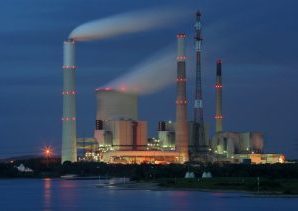
- In Thermal power plant heat energy is converted to electrical energy.
- Large amount of fossil fuels is burnt every day to heat water and further the steam formed is used to rotate the turbine of dynamo and electricity gets produced.
- Mainly thermal power plants are made in the coal fields as it is cheaper to carry electricity then coal.
Hydro power plant:
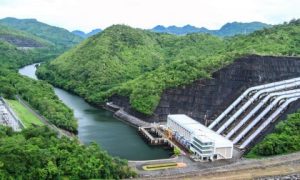
- In Hydro power plant the kinetic energy of water is used to produce electric energy.
- In this power plant water is blocked or kept at a height (with stored potential energy) which falls on the turbine connected to the dynamo from a large height thus turbine gets rotated and electricity is produced.
- Hydro power plants are situated near dams.
Advantage of hydro power plants:
- No environmental pollution is caused.
- Flowing water is renewable source of energy.
- Dam construction prevents flooding of rivers and also provides water for irrigation purpose.
Disadvantage of hydro power plant:
- A large amount of agricultural land, a wide variety of flora and fauna gets submerged in the water of reservoir of the dam.
- Large ecosystems are destroyed.
- Natural vegetation when submerged under water in anaerobic conditions they produce methane which causes green-house effect.
- People face much social and environmental problems. Also dam is much expensive to construct.
Non-conventional sources of energy:
- Energy which is generated by using wind, tides, solar, geothermal heat, and biomass including farm and animal waste as well as human excreta is known as non-conventional energy.
- All these sources are renewable or inexhaustible and do not cause environmental pollution.
- Non-conventional source of energy are inexpensive.
Bio mass:
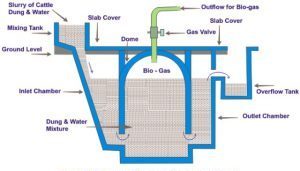
- One must be aware of the use of cow dung as the fuel, but on burning dung cakes it gives less heat but a lot of smoke. So Advance technology is needed to increase the efficiency of these fuels.
- When wood is burnt in a limited supply of oxygen and water then charcoal is produced. It burns smokeless and has a higher heat generation efficiency.
- Cow-dung, residue after harvesting the crops, vegetable waste and sewage, when decomposed in the absence of oxygen, produces bio-gas.
- When the gas is produced by the input material of cow dung, then it is said as ‘gobar gas’.
- Bio-gas contains up to 75% methane, so it is regarded as the excellent fuel.
- The left slurry in the biogas plant is used as manure which is reached with nitrogen and phosphorous.
Wind energy:

- The blow of wind is caused by unequal heating of landmass and water bodies by the solar radiation.
- Blowing wind possess kinetic energy which can be used by us to obtain different source of energy.
Uses of wind energy:
- We can generate electricity by rotating the turbine of dynamo with the help of wind mills.
- It is also used to lift underground water for irrigation and other purpose.
- Flour and other mills also uses the kinetic energy of wind.
- To get larger amount of energy a large number of wind mills are installed in field, these large area of field is called wind energy farm.
Note: The minimum wind speed to harness wind energy must be of 15 km/hr.
Solar Energy:
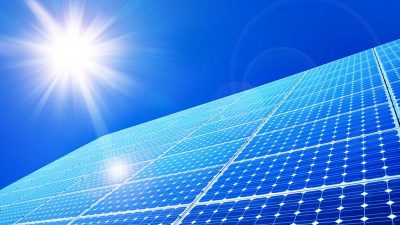
- The sun is regarded as the ultimate source of energy. It releases enormous amount of energy and it will continuously release its energy for more than 5 billion of years.
- Photovoltaic cells convert solar radiations directly into electricity through silicon solar cells. These photo voltaic cells when arranged on flat sheets are said to be solar panels.
- There are various devices which use solar energy, they are solar cooker, solar cells, solar water heater etc.
Energy from the sea:
- Sea is said to be a treasure of minerals and resources. Apart from it, Sea is also regarded as the good natural source of energy.
- The several energy consequences related to sea are given below:
Tidal Energy:
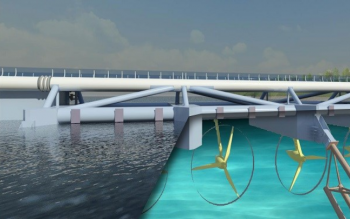
- Water level in the sea rises and falls periodically due to the gravitational pull of moon and spinning of the earth.
- There are mainly two types of tides one is high tide and the other is low tide. The difference of the sea levels are called tidal energy.
- Across a narrow opening to the sea, a dam is constructed to harness the tidal energy.
- The turbine is fixed at the opening which converts tidal energy to electricity.
Wave Energy:
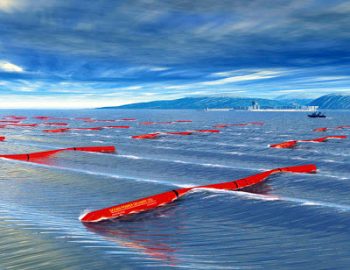
- Strong winds across sea generate sea waves.
- Kinetic energy of these waves can be trapped to generate electricity.
Ocean thermal energy:
- Sun heats the upper layer of the sea while the lower layer of the sea is relatively cold.
- This difference in temperature of the water level is used to obtain electricity in ocean thermal conversion plants.
- The condition to obtain the energy by these plants is that it can only operate if the temperature difference between the water at the surface and water at depths up to 2 km is 293 K (20°C) or more.
- A volatile liquid like ammonia boils on the warm surface-water. The vapours of the liquid are then used to run the turbine of generator.